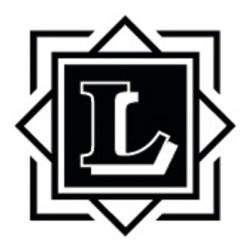Analysis
Daphne Mary Burgess (testatrix), who was a widow, had made a will on 23 September 1996 (1996 will) leaving her entire estate equally between her three children, the first and second claimants and the first defendant. At that time, she was living at 8 Abbey Way, Bradville, Milton Keynes (8 Abbey Way) and, while retaining a sense of financial independence, she relied on her son for the payment of household bills. Her physical health deteriorated as she became older, medication was already required for hypertension when she was diagnosed with diabetes, and an arthritic condition worsened to the point where she registered as disabled. By summer 2006, when she was aged 78, it was clear that the testatrix could no longer cope physically with 8 Abbey Way, and her son arranged to buy her a bungalow at 8 Bridle Close, Bradville, Milton Keynes (8 Bridle Close). This created some friction with the first defendant as she thought it should have been bought in their mother’s, rather than in her brother’s, name. As a result of an intemperate email, which the second claimant sent to the first defendant, there was no communication between them from early August until late December. It was the first defendant who, on 4 December 2006, made contact with a firm of solicitors, Woodfines LLP, to handle the future sale of 8 Abbey Way and, at the same time, to ask for someone to take her mother’s instructions to make a will. By this stage the testatrix, who had difficulties controlling her diet and taking her medication, was having dizzy and dozy spells. She had, however, told her daughter that the second claimant agreed that she should have the proceeds of sale of 8 Abbey Way but pay for a new kitchen and bathroom at 8 Bridle Close. The first defendant took her mother to the offices of Woodfines LLP on 20 December 2006 where instructions were taken for a will by the head of domestic conveyancing, David Webster. He had not previously seen the testatrix and was unaware of the existence of the 1996 will. Nevertheless, he noted the likely net value of 8 Abbey Way and the amount that was attributable to the proposed improvements to 8 Bridle Close. He understood that the testatrix was to make a lifetime gift of this amount to the second claimant and for this reason he was to be excluded from the estate, which was to be divided equally between the first claimant and the first defendant. When the will was drafted, it was not sent to the testatrix for her to check and approve. She only saw it when the first defendant took her back to the offices of Woodfines LLP on 12 January 2007 to execute the engrossment (2007 will). The second and third defendants, who were two of the partners in the firm, were appointed to be executors and there were some specific legacies of personal possessions. After the disposition of residue, a statement was included that only limited provision was being made for the second claimant because of the substantial lifetime provision that had been made or would shortly be made in his favour. The attending solicitor said that it was his practice to read the draft verbatim and explain what it meant clause by clause. In the time that elapsed between the two attendances, the testatrix felt light-headed and had a fall in her son’s kitchen on 29 December 2006. Paradoxically, this led to a mending of the rift between her son and daughter as the former contacted the latter, and the testatrix stayed with the first defendant until she was able to move into 8 Bridle Close. 8 Abbey Way was sold in April 2007 and the net proceeds of sale were invested in an over 60s plus account with the Nationwide Building Society. A number of payments from a linked Flexaccount, totalling over £20,600 (transactions), were then made to the first defendant, her husband and children during the remaining two years of the testatrix’s life. Although the testatrix did discuss the making of gifts to the first claimant and the first defendant with the second claimant, she did not tell him that he had been cut out of her will. She had a stroke in November 2007, was hospitalised for three weeks in August 2008 and eventually died in May 2009. The claimants brought proceedings challenging the validity of the 2007 will on the grounds that the testatrix lacked testamentary capacity and/or did not know or approve of the contents and seeking to set aside the transactions on the grounds that she lacked the necessary capacity or they were procured by the first defendant’s undue influence. They also sought an account of the first defendant’s dealings with the testatrix’s finances and an order that she be replaced as an executrix of the 1996 will.
Held (allowing the claim in part):
The first defendant was the driving force behind the instructions that were given for the drafting of the 2007 will. It was at a time when she had fallen out with her brother – she was angry with him and felt that he was sufficiently wealthy not to need (or maybe even deserve) part of his mother’s inheritance. It was more likely than not that she was present throughout and provided the information to the attending solicitor. It was also more likely than not that the testatrix had been suffering from a series of mini-strokes from the summer of 2006, resulting in her having a significant loss of capacity. According to the medical evidence, the testatrix was suffering from a disorder of the mind, namely vascular dementia, at the relevant time. While this was not so severe that it impaired her ability to understand the general nature and consequences of making a will, nor probably her ability to appreciate sufficiently the extent of her estate, that evidence – supported by observations in contemporaneous email correspondence – did show that her mental state had deteriorated to the extent that the testatrix lacked the necessary degree of understanding to comprehend and appreciate the claims to which she ought to give effect within the third limb of the test set out in Banks v Goodfellow (1869-70) LR 5 QB 549. Even if she had the requisite capacity at the time, and notwithstanding that it had been properly executed after being prepared by a solicitor and read over to her, the totality of the evidence was that the testatrix lacked the appropriate knowledge and approval of the contents of the 2007 will. Consequently, the 2007 will would be pronounced against and the 1996 will pronounced for in solemn form.
With regard to the transactions, lack of testamentary capacity did not mean that there was necessarily a lack of capacity to make lifetime gifts but the degree of understanding required in respect of any instrument was relative to the particular transaction which it is to effect. While the medical evidence could not pinpoint a time when the testatrix’s capacity to make the payments was impaired, it was at least clear that she did not have capacity to make any financial gifts in the last months of her life. In the alternative, a presumption of undue influence arose from the fact that the testatrix reposed trust and confidence in the first defendant from the time she moved into 8 Bridle Close; a presumption that would not be rebutted if the transaction was not readily explicable by the relationship of the parties or by reference to the ordinary motives by which people are accustomed to act. All of the payments that were made in the period dating from November 2007 were set aside on the basis that the transactions took place at a time when the testatrix did not have the capacity to make the decision to divest herself or were made without her knowledge and approval, alternatively by reason of the first defendant’s undue influence, which was presumed by reason of their relationship of trust and confidence combined with the nature of the transactions requiring an explanation. Accordingly, they were to be repaid to the estate with interest thereon. As for the remaining relief, it was not necessary for an account to be ordered and, in the circumstances, there was no conflict of interest between the beneficiaries of the 1996 will that would require the removal of the first defendant as an executrix thereof. Nor would the trust property be endangered by her remaining an executrix of the 1996 will.
JUDGMENT HER HONOUR JUDGE KAREN WALDEN-SMITH: Introduction [1] Daphne Mary Burgess (Daphne Burgess) was born on 4 August 1928. She died on 30 May 2009. On 12 January 2007 she signed a will which, if valid, revoked an earlier will dated 23 September 1996 (the earlier will). The earlier will left the entirety of her …Continue reading "Burgess & anr v Hawes & ors 0CL10537"

